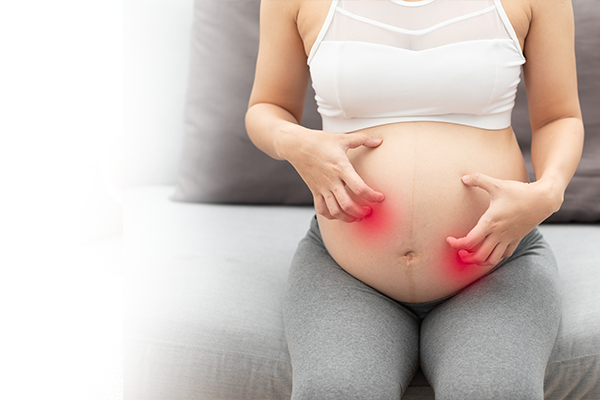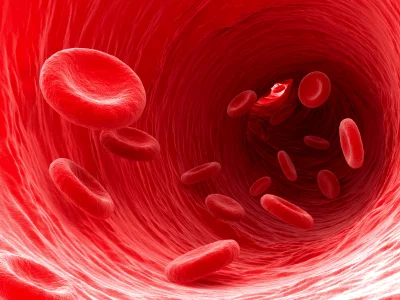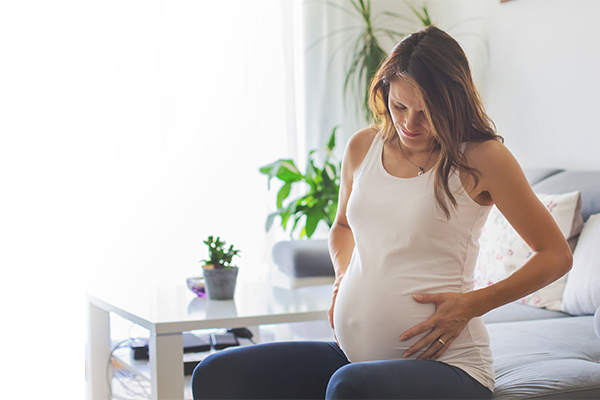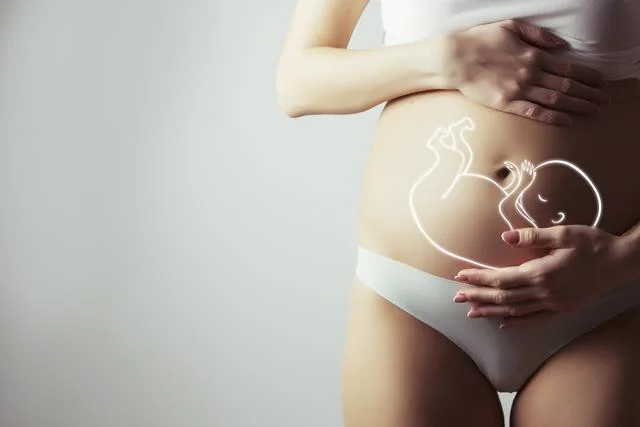Skin itching can have many different causes. During pregnancy, itching is most commonly related to the stretching of the skin on the belly or inadequate skin hydration. However, there are also cases where it could be a symptom of a pregnancy complication, such as cholestasis of pregnancy. How can you alleviate itching during pregnancy?
During pregnancy, many physiological changes occur, including changes to the skin. More pigment changes appear, such as the Linea nigra or darkening of the areolas. Pregnant women also become more sensitive to UV radiation, which can result in the appearance of what is known as the “pregnancy mask” (chloasma). However, most pregnant women complain of stretch marks on the belly, breasts, thighs, or buttocks. All these changes are not signs of pathology, but it is important to consult your doctor if any symptoms arise.
Why does the belly itch during pregnancy?
Many expectant mothers complain of bothersome itching on the belly during pregnancy. This is usually due to the skin stretching and expanding. Typically, these symptoms reduce with proper moisturizing and skin care. The products used for this purpose should contain allantoin or shea butter.
Skin itching is also related to hormonal changes during pregnancy, mainly due to the levels of progesterone and estrogen. The reaction associated with itching is also modified by the concentration of bile acids, which increases during cholestasis.
Itching and dermatological problems during pregnancy
Skin itching can frequently occur as part of various dermatological conditions, such as:
- Pemphigoid of pregnancy – commonly referred to as “herpes of pregnancy,” this condition is characterized by itching, burning, and a rash. It is a pregnancy-specific dermatosis. The symptoms usually disappear after childbirth but may recur in future pregnancies. It is important to note that this condition can cause fetal growth restriction and premature birth. The first skin changes are typically localized around the belly button.
- Herpes gestationis – this condition occurs most often in the third trimester and manifests as a rash in the genital area, groin, or joint folds. It is relatively rare.
- Scabies – frequently occurs in the first trimester. During its course, the itching is intense, and the skin shows nodular changes, scars from scratching, and sores.
- PUPPP (Pruritic Urticarial Papules and Plaques of Pregnancy) – most commonly appears in the final weeks of pregnancy and is characterized by small skin lesions without blister formation.
- Atopic dermatitis – a chronic condition that usually begins in childhood but can also first appear during pregnancy. In addition to intense itching, the skin is very dry, and the changes typically occur in the areas of the joints.
- Polymorphic pregnancy rashes – unlike pemphigoid, these do not involve changes around the belly button. They are usually localized around stretch marks and present as merging, reddish patches with intense itching.
It is important to remember that dermatological conditions in pregnant women are not a contraindication for cord blood collection. If you, as expectant parents, have further questions, feel free to fill out our contact form.
Itching during pregnancy – Cholestasis of pregnancy
In the last trimester, one of the dangerous complications of pregnancy is cholestasis of pregnancy. This is a liver disease associated with excessive bile acid secretion, which can present as skin itching. It mainly affects the palms and soles of the feet and often worsens at night. Other symptoms associated with cholestasis include elevated bile acid levels in the blood. Treatment is symptomatic for the mother and involves monitoring the fetus. Therapy typically includes ursodeoxycholic acid. In the case of cholestasis, it is recommended to deliver the baby before the 40th week of pregnancy, depending on bile acid levels. Possible complications of this condition include fetal hypoxia, placental insufficiency, and premature birth. For this reason, increased itching, especially towards the end of pregnancy, should not be ignored, and its occurrence should be reported to a specialist.
Methods for relieving itching during pregnancy
For dermatological conditions, treatment is often focused on the specific condition. These can include various ointments, creams, or other medications prescribed by a doctor. Antihistamines and glucocorticoids are also used to relieve itching, but these should never be taken without consulting a doctor. It is very important to moisturize the skin during pregnancy and use gentle cosmetics that won’t further irritate the skin. In the case of allergic skin reactions, it is best to remove the triggering factor from the environment or diet. Dermatologists also often recommend using emollients, especially during flare-ups of atopic dermatitis.
Doctors also note that itching can be intensified by excessive heat, such as hot baths or sweating. Therefore, the expectant mother should avoid long, very hot baths. For sleeping, she should choose loose nightgowns to avoid exacerbating the discomfort.
Recently, cosmetics with natural ingredients have become very popular. However, it is important to note that pregnant women are more susceptible to contact dermatitis, and these products may not be purified of allergens that could cause allergic reactions.
See also: Allergy during pregnancy










